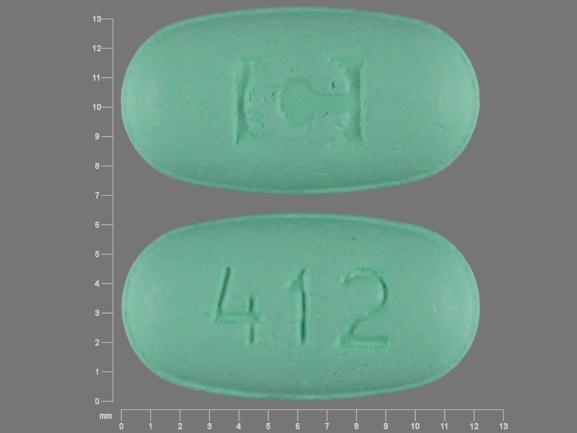Gabitril Dosage
Generic name: TIAGABINE HYDROCHLORIDE 2mg
Dosage form: tablet, film coated
Drug class: Gamma-aminobutyric acid reuptake inhibitors
Medically reviewed by Drugs.com. Last updated on Sep 20, 2023.
General:
The blood level of tiagabine obtained after a given dose depends on whether the patient also is receiving a drug that induces the metabolism of tiagabine. The presence of an inducer means that the attained blood level will be substantially reduced. Dosing should take the presence of concomitant medications into account.
GABITRIL (tiagabine HCl) is recommended as adjunctive therapy for the treatment of partial seizures in patients 12 years and older.
The following dosing recommendations apply to all patients taking GABITRIL:
- GABITRIL is given orally and should be taken with food.
- Do not use a loading dose of GABITRIL.
- Dose titration: Rapid escalation and/or large dose increments of GABITRIL should not be used.
- Missed dose(s): If the patient forgets to take the prescribed dose of GABITRIL at the scheduled time, the patient should not attempt to make up for the missed dose by increasing the next dose. If a patient has missed multiple doses, patient should refer back to his or her physician for possible re-titration as clinically indicated.
- Dosage adjustment of GABITRIL should be considered whenever a change in patient’s enzyme-inducing status occurs as a result of the addition, discontinuation, or dose change of the enzyme-inducing agent.
Induced Adults and Adolescents 12 Years or Older: The following dosing recommendations apply to patients who are already taking enzyme-inducing antiepilepsy drugs (AEDs) (e.g., carbamazepine, phenytoin, primidone, and phenobarbital). Such patients are considered induced patients when administering GABITRIL.
In adolescents 12 to 18 years old, GABITRIL should be initiated at 4 mg once daily. Modification of concomitant antiepilepsy drugs is not necessary, unless clinically indicated. The total daily dose of GABITRIL may be increased by 4 mg at the beginning of Week 2. Thereafter, the total daily dose may be increased by 4 to 8 mg at weekly intervals until clinical response is achieved or up to 32 mg/day. The total daily dose should be given in divided doses two to four times daily. Doses above 32 mg/day have been tolerated in a small number of adolescent patients for a relatively short duration.
In adults, GABITRIL should be initiated at 4 mg once daily. Modification of concomitant antiepilepsy drugs is not necessary, unless clinically indicated. The total daily dose of GABITRIL may be increased by 4 to 8 mg at weekly intervals until clinical response is achieved or, up to 56 mg/day. The total daily dose should be given in divided doses two to four times daily. Doses above 56 mg/day have not been systematically evaluated in adequate and well-controlled clinical trials.
Experience is limited in patients taking total daily doses above 32 mg/day using twice daily dosing. A typical dosing titration regimen for patients taking enzyme-inducing AEDs (induced patients) is provided in Table 7.
|
Initiation and Titration Schedule |
Total Daily Dose |
|
|
Week 1 |
Initiate at 4 mg once daily |
4 mg/day |
|
Week 2 |
Increase total daily dose by 4 mg |
8 mg/day (in two divided doses) |
|
Week 3 |
Increase total daily dose by 4 mg |
12 mg/day (in three divided doses) |
|
Week 4 |
Increase total daily dose by 4 mg |
16 mg/day (in two to four divided doses) |
|
Week 5 |
Increase total daily dose by 4 to 8 mg |
20 to 24 mg/day (in two to four divided doses) |
|
Week 6 |
Increase total daily dose by 4 to 8 mg |
24 to 32 mg/day (in two to four divided doses) |
|
Usual Adult Maintenance Dose in Induced Patients: |
32 to 56 mg/day in two to four divided doses |
|
Non-Induced Adults and Adolescents 12 Years or Older: The following dosing recommendations apply to patients who are taking only non-enzyme-inducing AEDs. Such patients are considered non-induced patients:
Following a given dose of GABITRIL, the estimated plasma concentration in the non-induced patients is more than twice that in patients receiving enzyme-inducing agents. Use in non-induced patients requires lower doses of GABITRIL. These patients may also require a slower titration of GABITRIL compared to that of induced patients (see CLINICAL PHARMACOLOGY, Pharmacokinetics and PRECAUTIONS, General, Use in Non-Induced Patients).
More about Gabitril (tiagabine)
- Check interactions
- Compare alternatives
- Reviews (5)
- Drug images
- Side effects
- During pregnancy
- Generic availability
- Drug class: gamma-aminobutyric acid reuptake inhibitors
- Breastfeeding
- En español
Patient resources
Professional resources
Related treatment guides
Further information
Always consult your healthcare provider to ensure the information displayed on this page applies to your personal circumstances.


